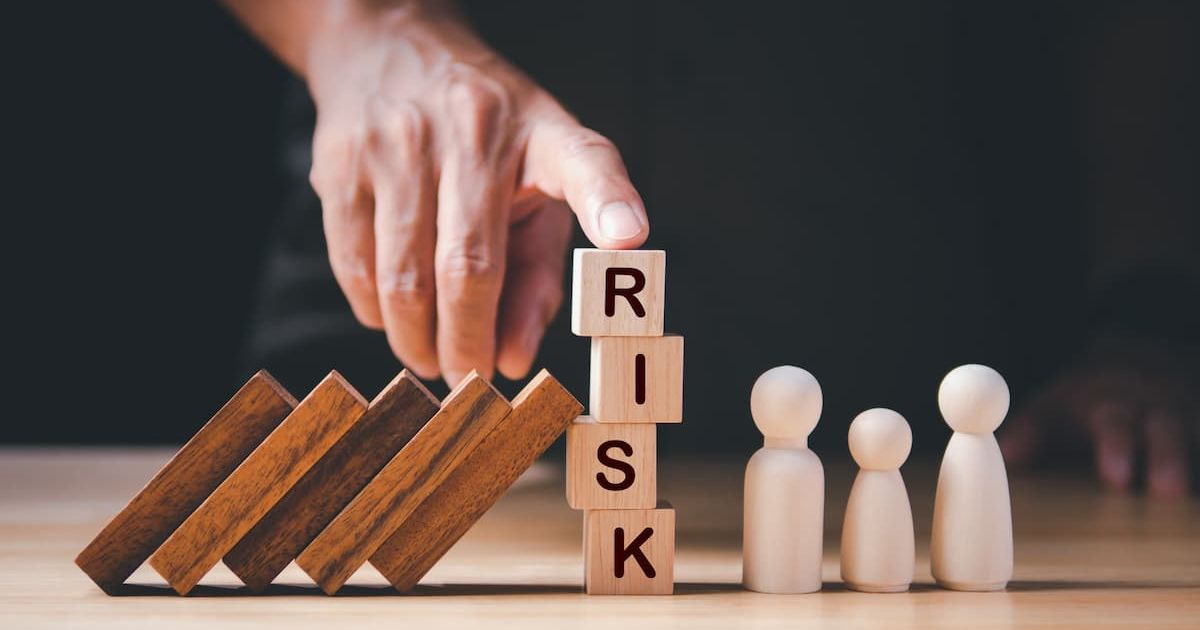Protect Your Business from Unexpected Risks
Protect Your Business from Unexpected Risks Running a business can feel like sailing across the ocean. On some days, the waters are calm, the skies are clear, and everything seems perfect. On other days, storms come out of nowhere, and you find yourself fighting waves you never saw coming. That is exactly what unexpected risks are: storms you didn’t predict.
Every entrepreneur, no matter the size of their business, faces risks. Some are manageable and even expected, like seasonal slowdowns or competition. But others strike without warning—economic downturns, cyberattacks, natural disasters, supply chain collapses, or even sudden changes in customer behavior. If you’re unprepared, these risks can damage your revenue, your reputation, and in some cases, the very survival of your company.
In this article, we’ll explore what unexpected risks are, why they matter, and most importantly, how you can protect your business from them.

1. Why Unexpected Risks Are So Dangerous
Business risks themselves aren’t unusual. Every business leader knows about challenges like cash flow issues, marketing failures, or employee turnover. But unexpected risks are different—they often come without warning and escalate faster than you can react.
Think about the COVID-19 pandemic. Thousands of businesses across the world had to shut down overnight. Some adapted by shifting online, while others had no backup plan and collapsed. Unexpected risks are dangerous because:
-
They disrupt your operations suddenly.
-
They often cost more to handle than expected.
-
They expose weaknesses in your planning.
-
They affect both your finances and your reputation.
Most importantly, they remind us that what you don’t see coming can hurt you the most.
2. Common Types of Unexpected Risks Businesses Face
Not all risks look the same, but most unexpected threats fall into these categories:
a) Financial Risks
Sudden expenses, loss of a major client, currency fluctuations, or delayed payments can hurt cash flow.
b) Operational Risks
Imagine your key supplier shutting down or a piece of critical equipment breaking down during peak season. Operations can stop instantly.
c) Legal and Compliance Risks
A new law, a surprise tax policy, or a lawsuit from an unhappy customer can appear suddenly.
d) Cybersecurity Risks
Hackers don’t give warnings. A data breach or ransomware attack can happen at any time.
e) Reputational Risks
One negative viral story about your business on social media can damage trust overnight.
f) Environmental and Natural Risks
Floods, earthquakes, wildfires, or global pandemics can cripple businesses physically and financially.
g) Strategic Risks
These arise from poor decisions or market changes—such as investing heavily in a product that customers don’t want.
Knowing these categories helps you prepare in advance, even for risks that seem far away.

3. Shifting to a Risk-Proof Mindset
Protecting your business from unexpected risks isn’t just about policies or tools—it’s about mindset. Businesses that survive crises are often the ones that expect the unexpected.
Here’s how you can build that mindset:
-
Stay flexible. Don’t tie your business to one revenue source, one supplier, or one strategy.
-
Encourage awareness. Train employees to notice potential issues early.
-
Welcome change. See risks as opportunities to innovate, not just threats.
-
Keep learning. Follow market trends, read industry reports, and listen to customers.
Resilient businesses don’t fear risks—they prepare for them.
4. Practical Strategies to Protect Your Business
Let’s dive into specific actions you can take to minimize the impact of unexpected risks.
1. Conduct Regular Risk Assessments
Every few months, sit down with your team and ask: “What could go wrong?” List possible risks, their likelihood, and potential impact. Tools like SWOT (Strengths, Weaknesses, Opportunities, Threats) and PESTLE (Political, Economic, Social, Technological, Legal, Environmental) analysis can help.
2. Build a Business Continuity Plan (BCP)
This is your “Plan B” when things go wrong. It should cover:
-
How to keep operations running if your office closes.
-
Backup suppliers in case your primary partner fails.
-
Remote work policies for employees.
-
Emergency communication channels with staff and customers.
3. Strengthen Your Finances
A solid financial cushion makes the difference between survival and collapse.
-
Build an emergency fund (ideally 3–6 months of expenses).
-
Diversify income streams.
-
Manage debts carefully.
4. Get the Right Insurance
Insurance is often overlooked until it’s too late. Depending on your business, consider:
-
General liability insurance.
-
Cybersecurity insurance.
-
Property and equipment insurance.
-
Business interruption insurance.
5. Invest in Cybersecurity
With businesses going digital, cyber risks are rising fast. Protect your business by:
-
Using firewalls and encryption.
-
Training staff to spot phishing scams.
-
Regularly updating software.
-
Backing up data securely.
6. Diversify Your Operations
Don’t put all your eggs in one basket. Have multiple suppliers, multiple markets, and multiple marketing channels. That way, if one fails, you have others to rely on.
7. Monitor Reputation Constantly
Set up alerts for your business name online. Respond quickly to customer complaints. If a PR crisis happens, communicate transparently instead of staying silent.
8. Train Your Employees
Employees are your first defense. Teach them how to respond to emergencies, handle cybersecurity threats, and communicate during crises.
9. Legal Protection
Work with a lawyer to ensure contracts are solid and that you’re complying with laws. This reduces the risk of lawsuits or penalties.
5. Real-Life Lessons from Businesses
-
Case Study: Target (2013 Data Breach)
A single cyberattack exposed data from 40 million customers. It cost the company millions in lawsuits and a damaged reputation. Lesson: Cybersecurity is not optional. -
Case Study: Small Restaurants During COVID-19
Many restaurants shut down overnight when lockdowns began. The ones that survived quickly pivoted to delivery and online ordering. Lesson: Flexibility saves businesses. -
Case Study: Nike Supply Chain (2000s)
Nike faced huge delays due to supply chain risks. Afterward, they invested in strong supply chain management and risk monitoring systems. Lesson: Diversification is key.
These stories remind us that risk isn’t always avoidable—but preparation always helps.
6. Building a Response Framework
When a crisis hits, your response needs to be fast and organized. Use this 5-step framework:
-
Detect – Spot the issue early.
-
Assess – Determine how severe it is.
-
Respond – Take immediate action.
-
Recover – Restore normal operations.
-
Review – Learn from the event and improve.
7. The Role of Technology
Technology itself can be risky, but it also offers tools for protection:
-
Cloud systems ensure your data isn’t lost in disasters.
-
AI tools predict market changes and risks.
-
Cybersecurity software blocks hackers.
-
Analytics platforms help monitor trends and weak points.
Smart technology, when used correctly, makes businesses more resilient.
8. Long-Term Resilience
Protecting your business isn’t just about short-term fixes. Long-term resilience comes from:
-
Building strong relationships with customers and suppliers.
-
Continuously improving processes.
-
Staying updated with trends.
-
Treating every risk as a lesson, not just a problem.
Conclusion
Unexpected risks are a part of business life. No one can predict the future, but you can prepare for it. From financial crises to cyberattacks, from natural disasters to sudden market changes, the key is to stay proactive instead of reactive.
By assessing risks regularly, building continuity plans, training employees, leveraging technology, and maintaining financial strength, you can shield your business from shocks. And when the next unexpected storm comes, your company won’t just survive—it will adapt, grow, and emerge stronger than before.
